
Jejuri Temple
At the eastern end of the Purandhar ridge, 16km south of Sasvad in Maharashtra, the Jejuri Temple is a popular place of pilgrimage and is famous for its fairs held in April and December. These honour the god Khandoba, a warrior form of Shiva, who killed Malla, a local demon.
The Khandoba Temple is reached only after passing through the streets of the town, as you make the approach towards a long flight of steps it becomes clear that one colour is going to dominate the day…yellow !



The 200 or so steps leading to the temple are punctuated by arched portals and subshrines containing effigies of donor figures.



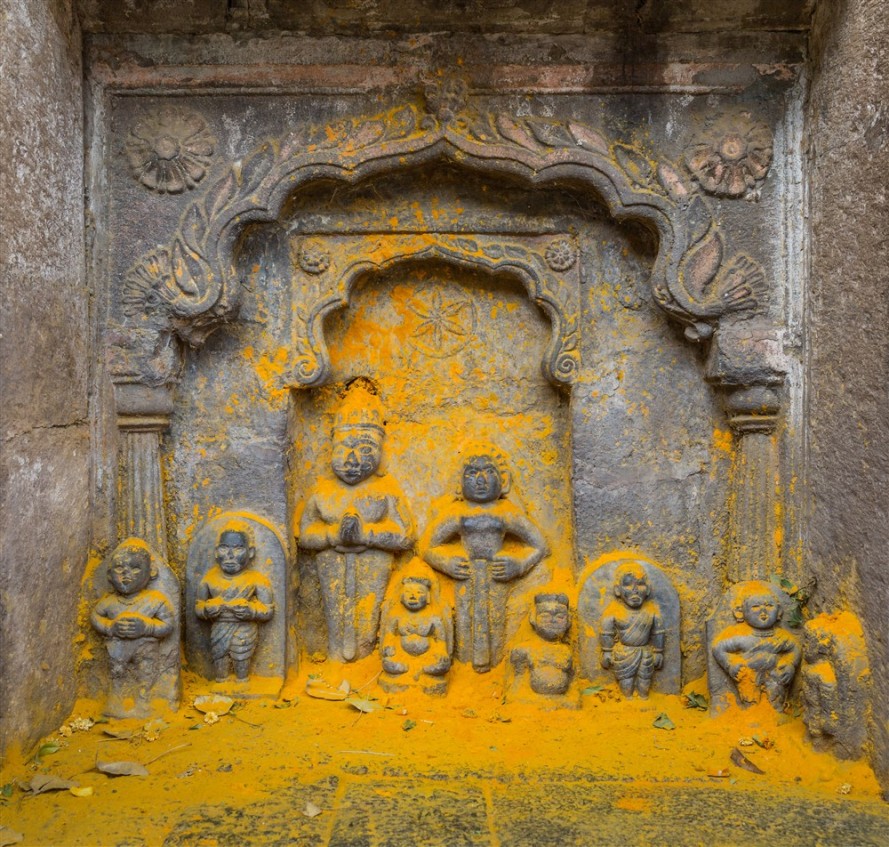

Throughout the ascent, vendors offer brass masks of Khandoba, recognised by his staring eyes and curling moustache, as well as bright yellow turmeric powder (and I assume modern substitutes) that are used in rituals of worship. Punctuating all of this are occasionally musicians singing devotional songs.
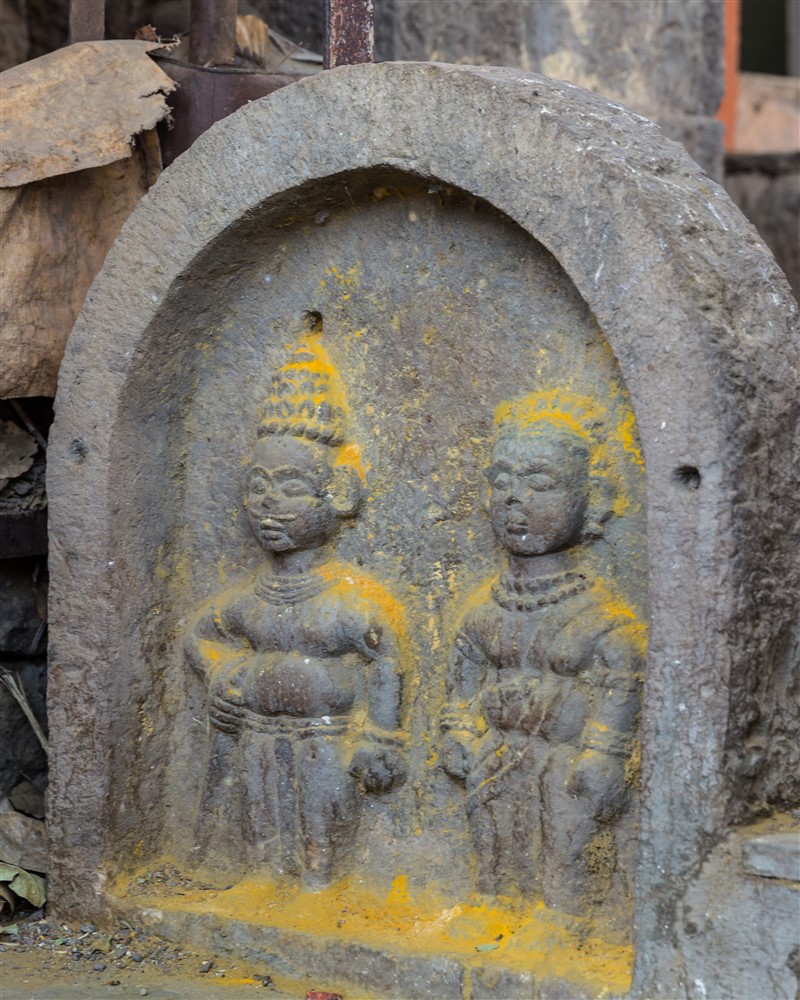

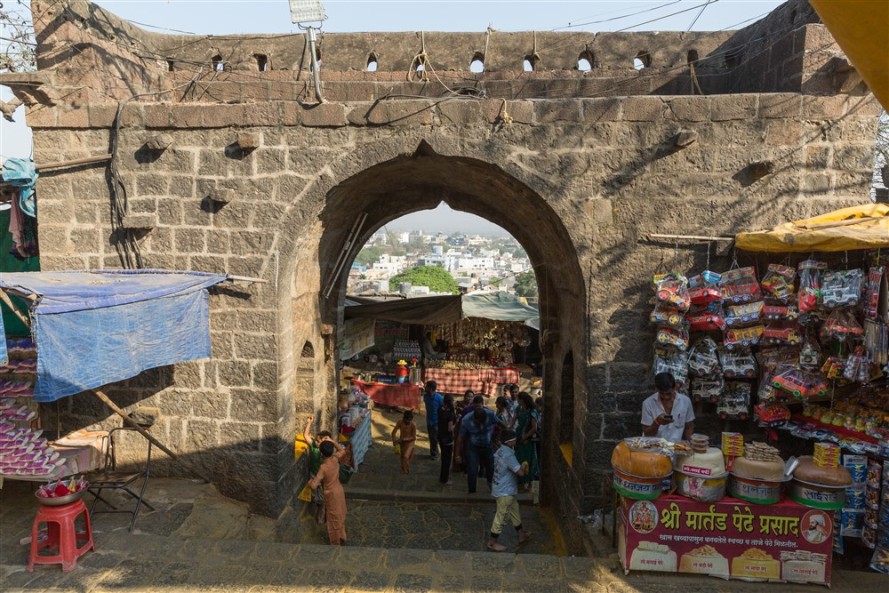

The steps are lined with tapering lamp columns with curving brackets, indicating more donations that have occurred over the decades and centuries.


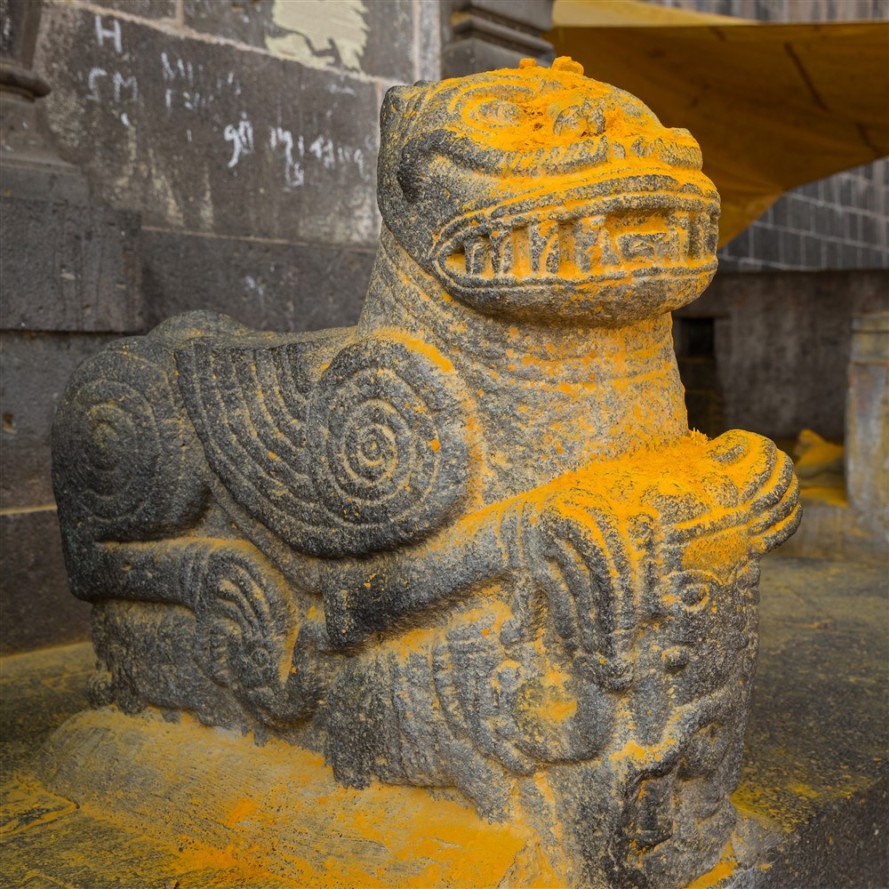

On our drive to the Jejuri temple from Pune, Rashmi had introduced me to the poetry of Arun Kolatkar (1932 – 2004).
Writing in both Marathi and English, Arun Kolatkar’s poems found humor in many everyday matters. His first book of English poetry, Jejuri, is a collection 31 poems pertaining to a visit here in 1963 which won the Commonwealth Writers’ Prize in 1977.
The poem she showed me on her phone was entitled Yeshwant Rao :
Yeshwant Rao
Are you looking for a god?
I know a good one.
His name is Yeshwant Rao
and he’s one of the best.
look him up
when you are in Jejuri next.
Of course he’s only a second class god
and his place is just outside the main temple.
Outside even of the outer wall.
As if he belonged
among the tradesmen and the lepers.
I’ve known gods
prettier faced
or straighter laced.
Gods who soak you for your gold.
Gods who soak you for your soul.
Gods who make you walk
on a bed of burning coal.
Gods who put a child inside your wife.
Or a knife inside your enemy.
Gods who tell you how to live your life,
double your money
or triple your land holdings.
Gods who can barely suppress a smile
as you crawl a mile for them.
Gods who will see you drown
if you won’t buy them a new crown.
And although I’m sure they’re all to be praised,
they’re either too symmetrical
or too theatrical for my taste.
Yeshwant Rao,
mass of basalt,
bright as any post box,
the shape of protoplasm
or king size lava pie
thrown against the wall,
without an arm, a leg
or even a single head.
Yeshwant Rao.
He’s the god you’ve got to meet.
If you’re short of a limb,
Yeshwant Rao will lend you a hand
and get you back on your feet.
Yeshwant Rao
Does nothing spectacular.
He doesn’t promise you the earth
Or book your seat on the next rocket to heaven.
But if any bones are broken,
you know he’ll mend them.
He’ll make you whole in your body
and hope your spirit will look after itself.
He is merely a kind of a bone-setter.
The only thing is,
as he himself has no heads, hands and feet,
he happens to understand you a little better.
As you get close to the top of the hill, be on the look out for a shrine slightly hidden away on the righthand side. We really didn’t expect to see this, but it was the very same Yeshwant Rao !

Stacked in a corner next to the shrine were crude wooden carvings of legs and arms, clearly left as offerings to Yeshwant Rao in the hope of a rapid recovery.

Having passed through the final gate with it’s impressive doors, you reach the temple itself, standing in the middle of a polygonal fortified enclosure.

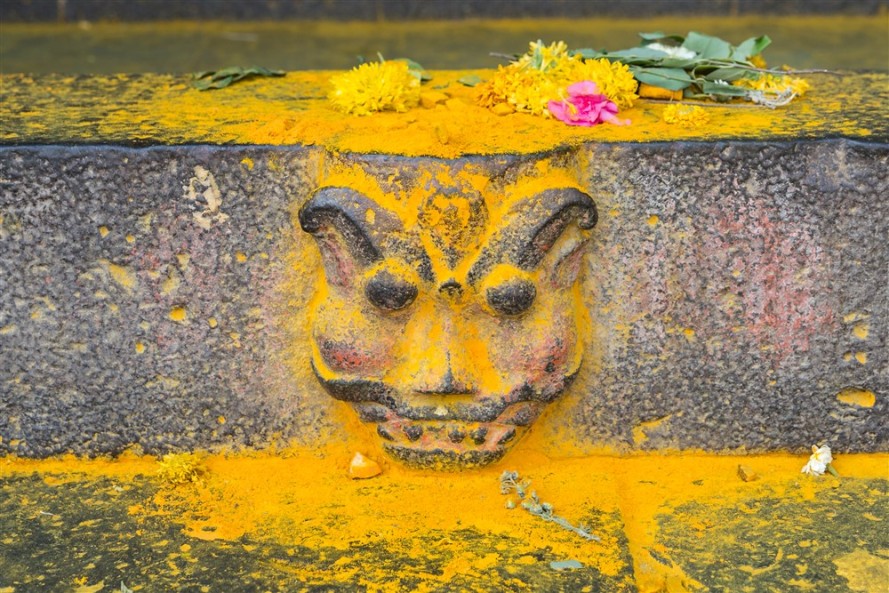


The enclosure if defined by deep arcades, some looking out over the town and plain beyond.
Four massive lamp columns stand in front of the main temple, and on the ground nearby next to a Nandi is a Tortoise, almost 7m in diameter and sheathed in brass.
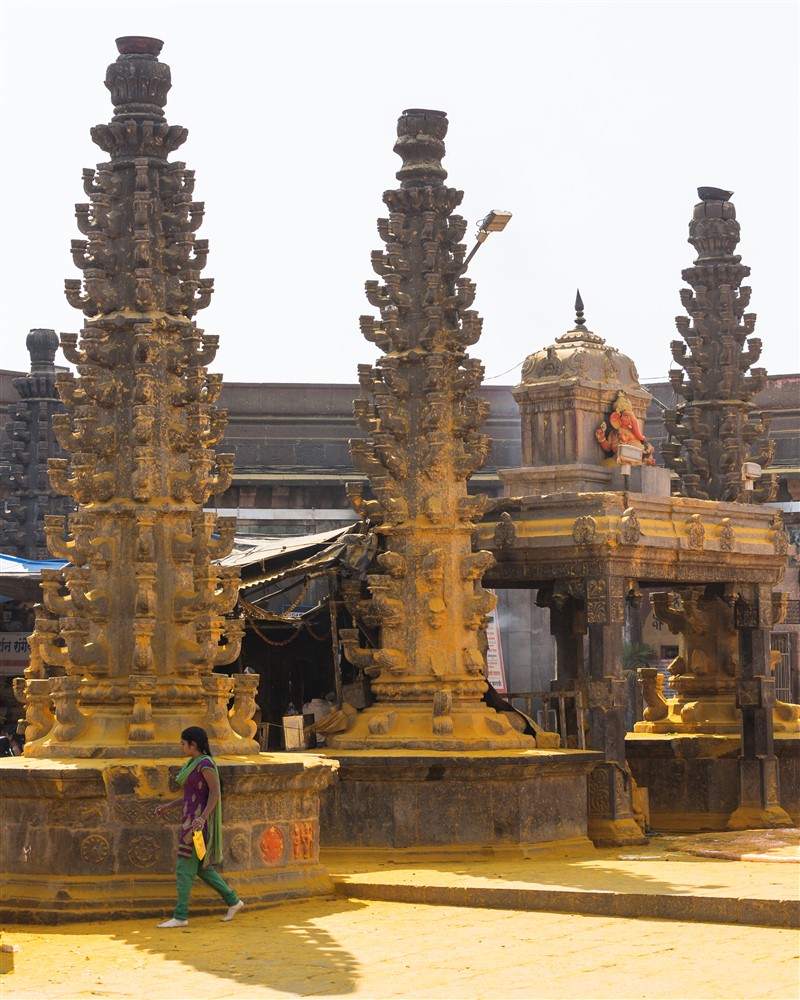







Khandoba Temple also has a place in the wider history of India. This was the setting in 1662 of a reconciliation between Shahji and his son Shivaji, the father bringing offers of peace from Bijapur. Aurangzeb is also said to have been driven away from Jejuri by the miraculous appearance of a swarm of bees (or hornets), after which the emperor bestowed on Khandoba a diamond worth Rs.125,000.


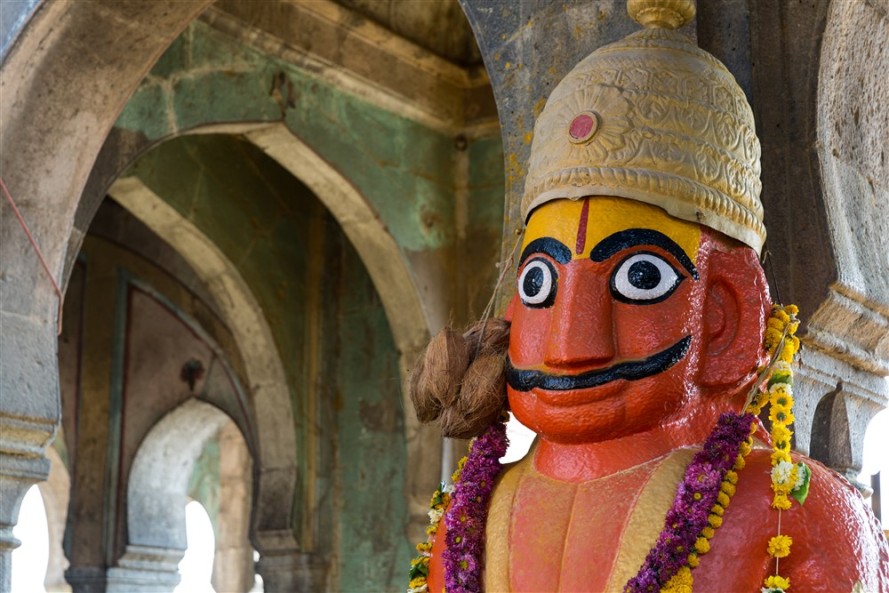
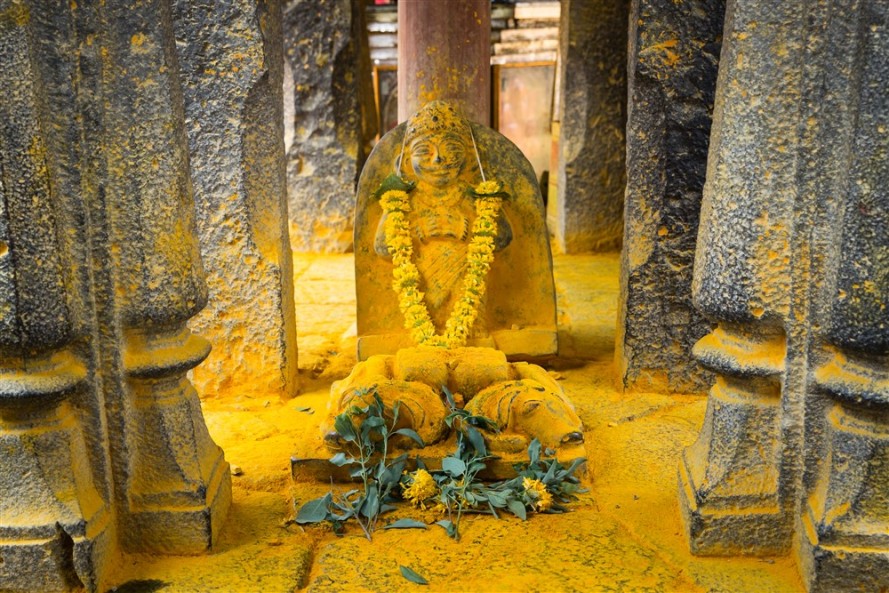

The temple has been substantially enlarged by the famous queen Ahilyabai, widow of Malhar Rao Holkar’s son, and her general, Tukoji.






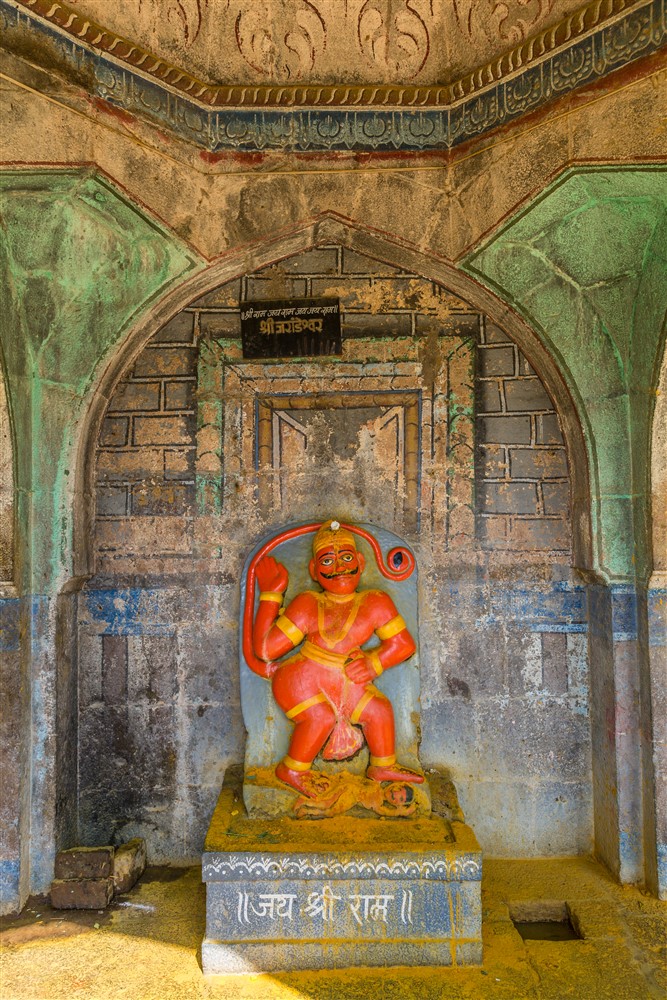

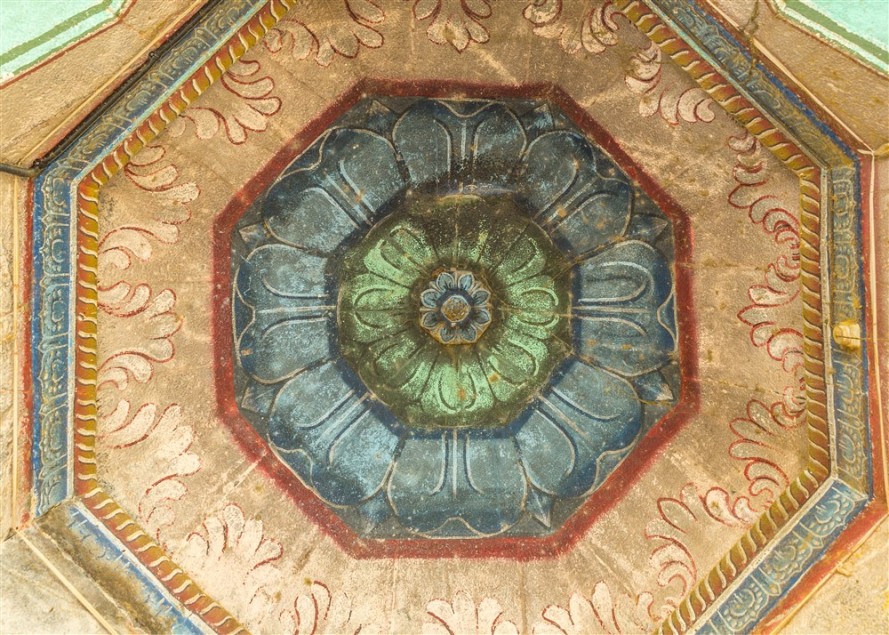
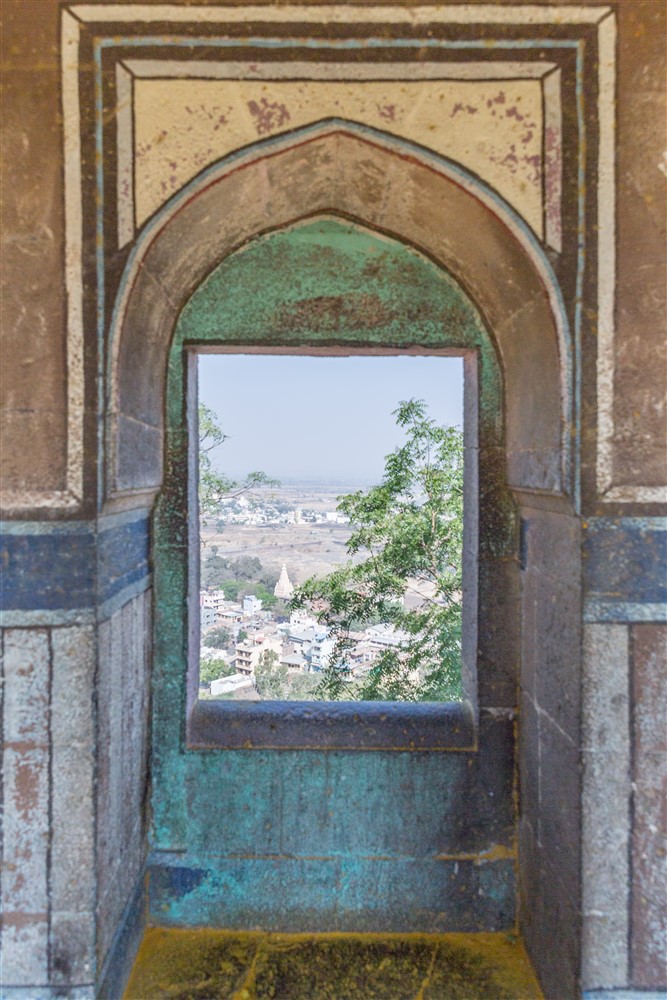


Khandoba is the Maratha manifestation of Shiva, though he is also identified with Kartikeya (standing atop a hill with his consorts), and with Vishnu (Kalki-like with horse and sword) and with the sun (sun-yellow turmeric and the name Martanda).
In Andhra regions he is called Mallikarjuna, in Karnataka he is Mallanna. Jains have also identified him with Malli-nath, and Muslims (who have a long history in the Deccan region) identify him as Mallu Khan. Khandoba clearly has a very broad following !


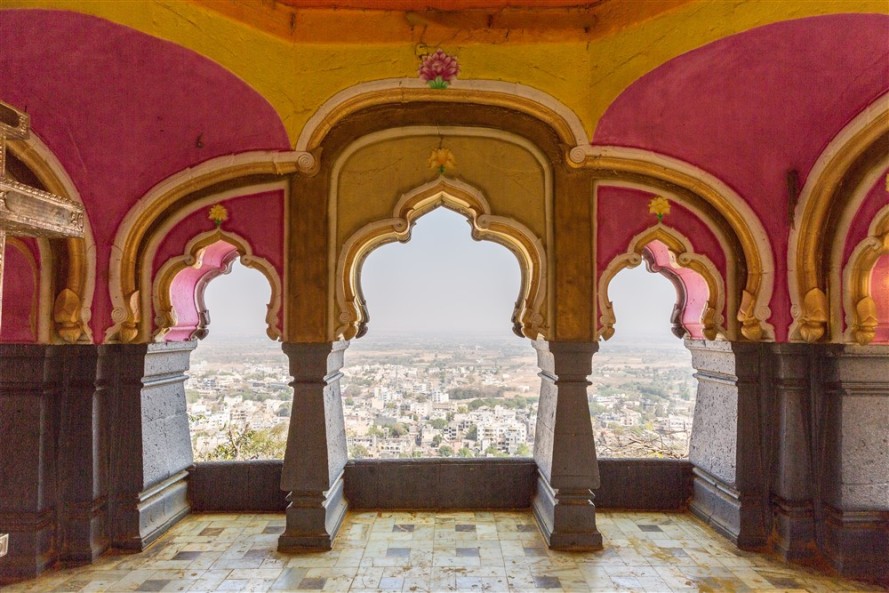




The Khandoba following rose to prominence in the 17th and 18th centuries and is supported by pastoral and mercantile communities throughout Maharashtra and northern Karnataka.

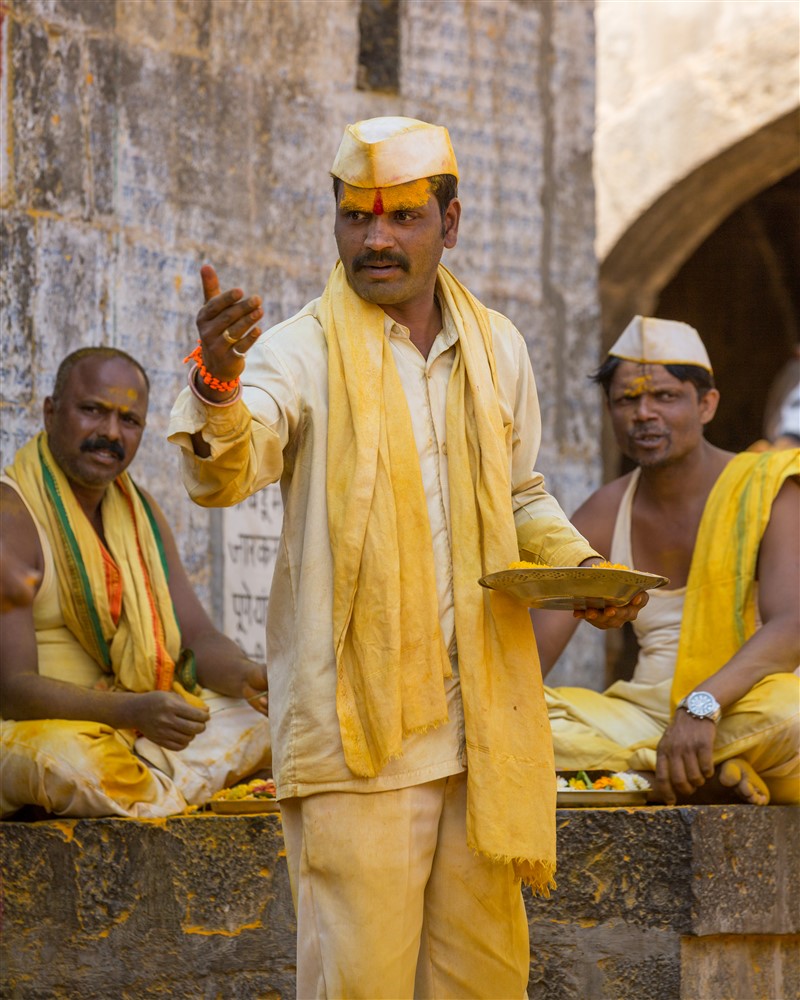


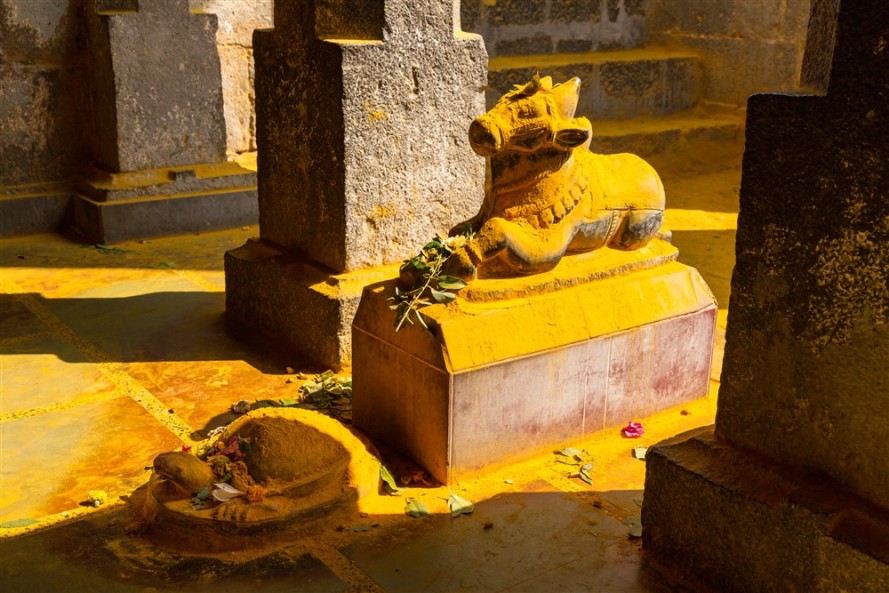
In art, Khandoba is visualised riding a white horse brandishing a sword (khadga), which gives him the name Khando-ba (ba, meaning father) or Khande-rao (rao, meaning leader or king). He wears a Maratha turban, has a magnificent moustache and beard. Sometimes, he has four hands to establish his divine stature, with the other two arms holding a trishul and a rattle-drum (damaru) thus linking him to Shiva.
He is often seen fighting demons — Mani and Malla. Accompanying him on his horse is his chief wife, Mhalsa. A dog also accompanies him. These images are widespread throughout the temple complex.


It’s easy to lose track of time here. There’s so much activity going on and quite an extensive complex to explore. The covered perimeter arcade is the perfect place to sit, relax, and escape from the midday sun.







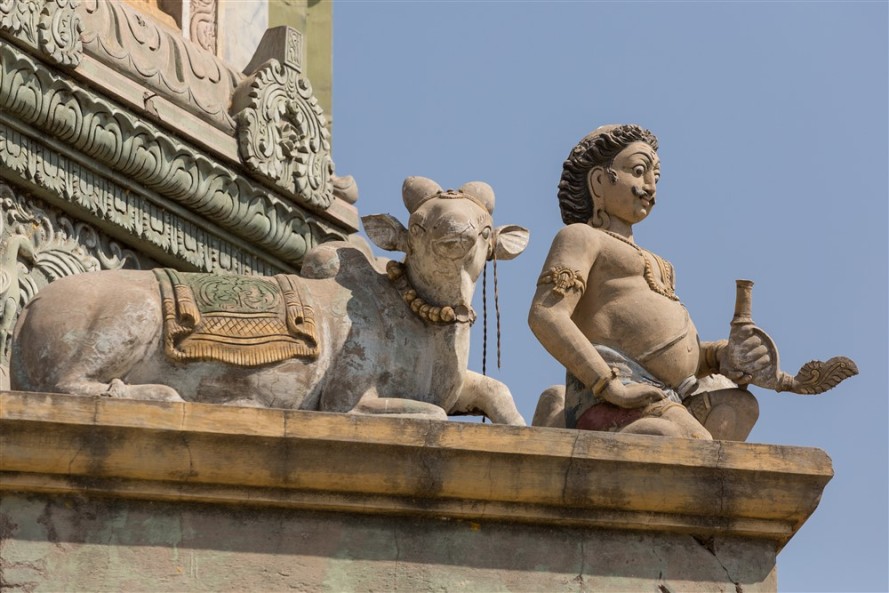




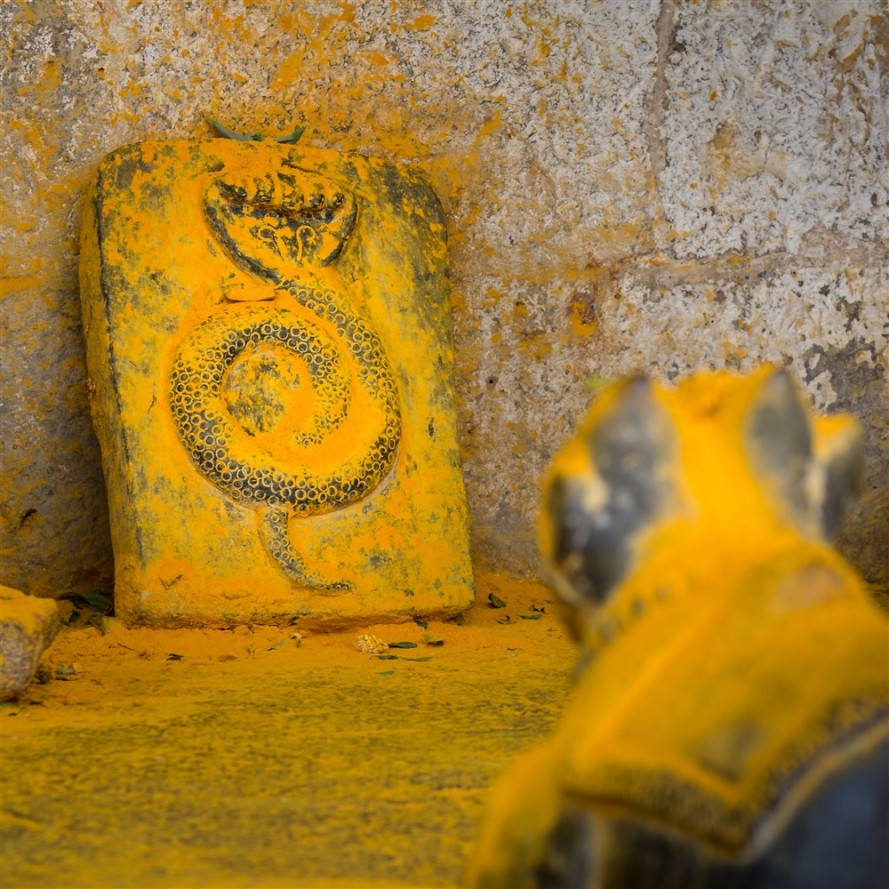








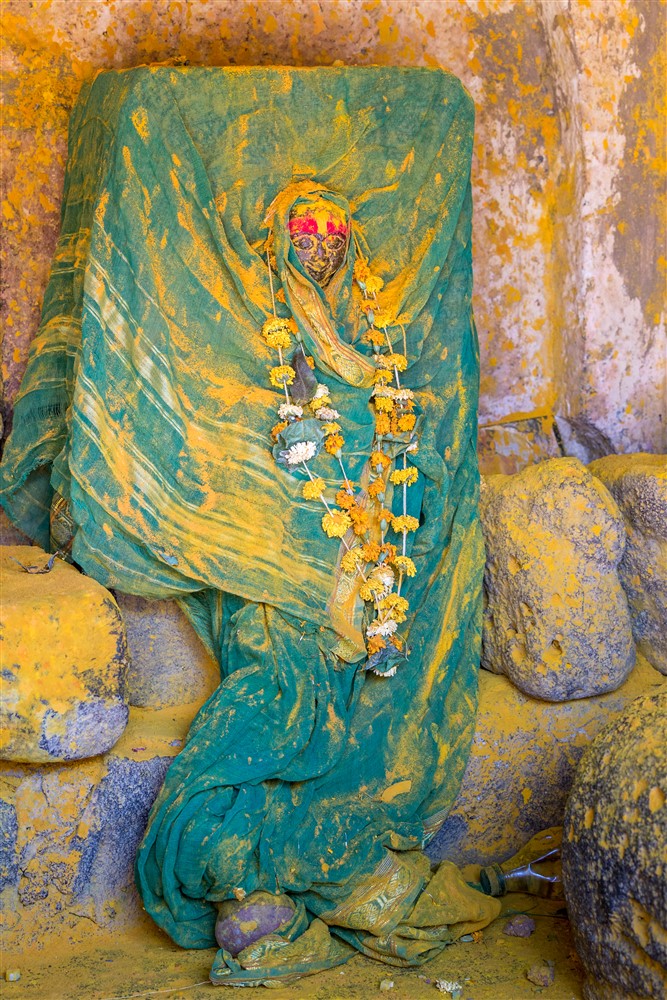




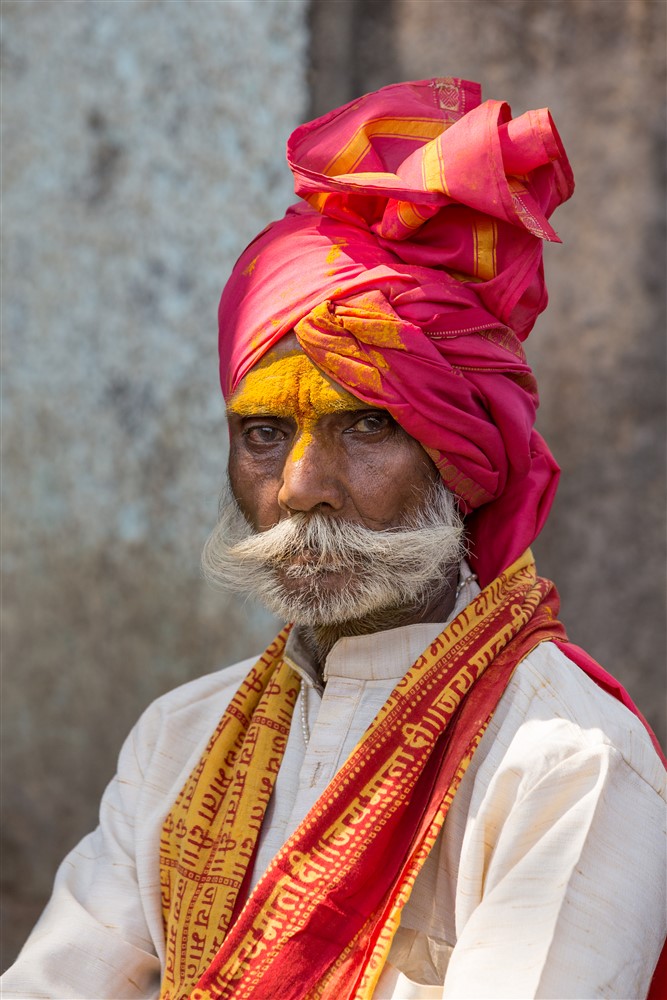




Please ‘Like’ or add a comment if you enjoyed this blog post. If you’d like to be notified of any new content, just sign up by clicking the ‘Follow’ button.
If you’re interested in using any of my photography or articles please get in touch. I’m also available for any freelance work worldwide, my duffel bag is always packed ready to go…
KevinStandage1@googlemail.com
Categories: India, Jejuri Khandoba Temple, Maharashtra





Your posting and classy pictures bring back the memories of my visit to this place years ago. The colour rhapsody and swarm of activities are hallmarks of this hill temple. Thank you.
LikeLike
Thanks for stopping by, and for your kind comments !
LikeLike
Your pictures are serendipity to me. I love them along with the digestable naratives. Thanks so much.
LikeLiked by 1 person
Thanks Rajneesh, that’s very kind of you to say. Got a lot more to post over the next couple of month, to complete documenting my last visit a couple of months ago ! Best wishes
LikeLike
Did the Aztecs visit? Photo 16 looks like it. Wonderful photos! So colorful.
LikeLike
Which day it’s Pooja Vara
LikeLiked by 1 person
I am afraid I do not know.
LikeLike